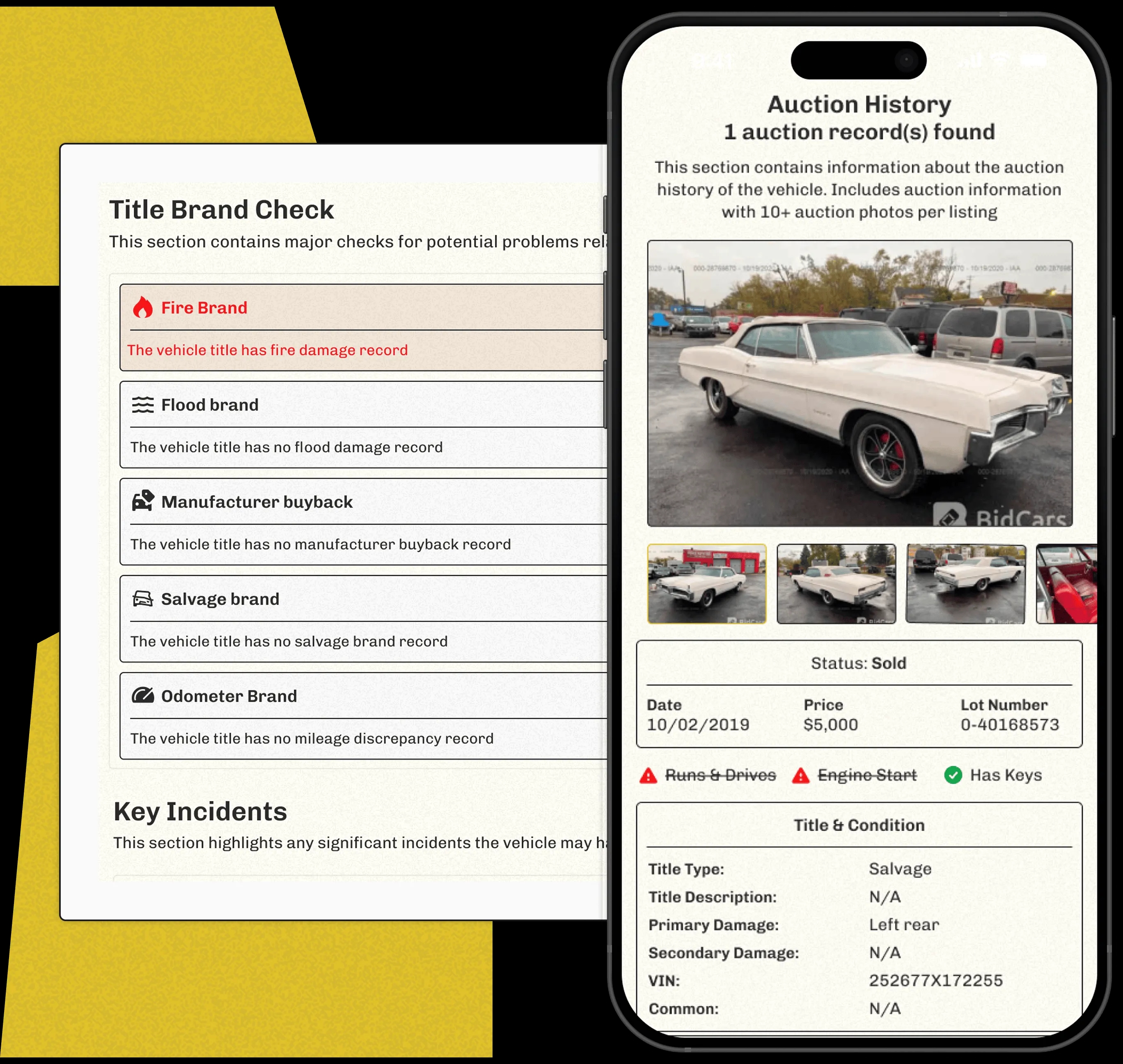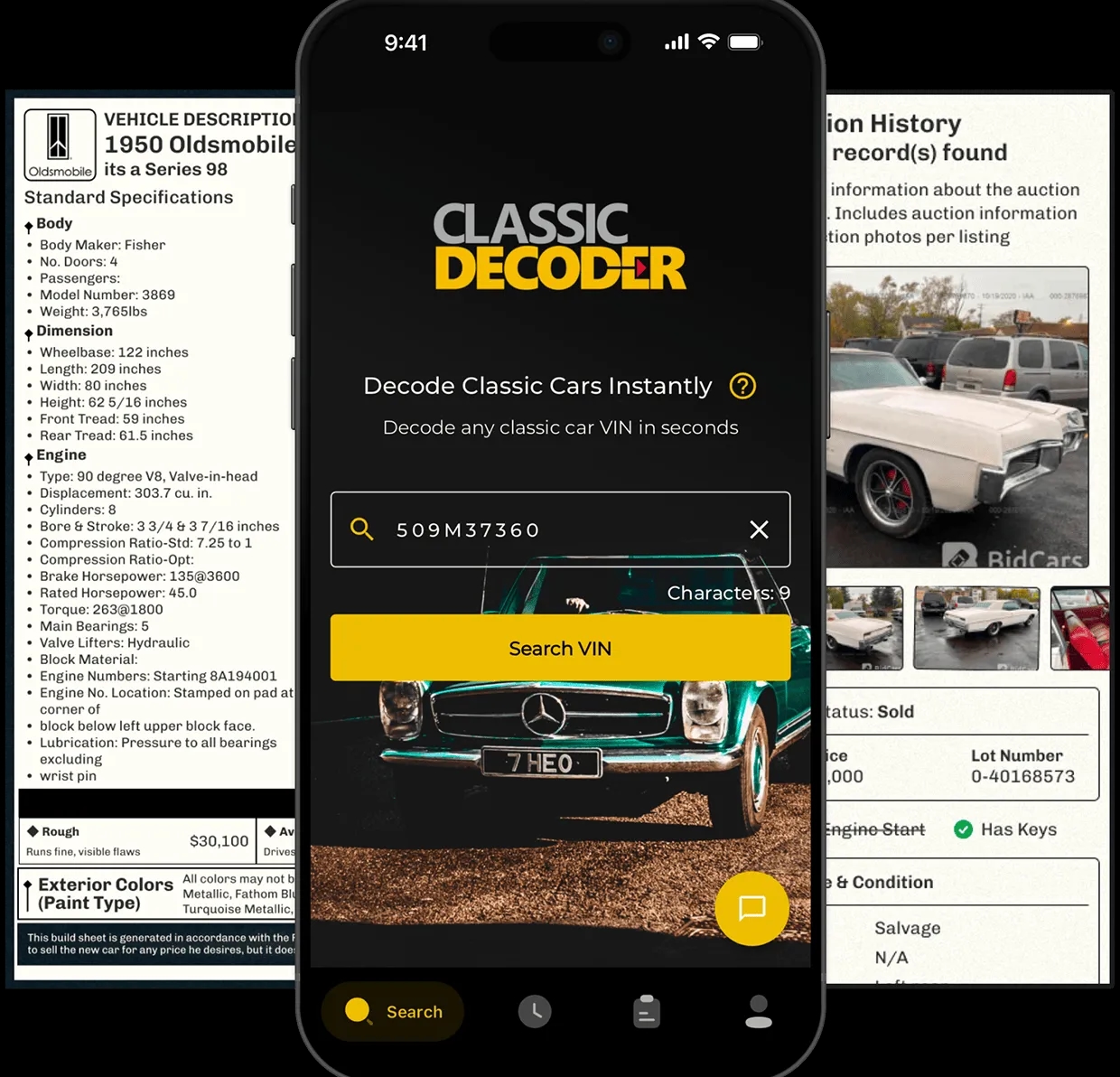1970 Ford Galaxie 500
The '70 Galaxie 500: a big, comfy cruiser! Think classic American muscle, softened. It wasn't as raw as its predecessors, but still held cultural sway, appearing in movies & TV. Its long hood, wide stance, and those iconic taillights? Pure 70s cool. A comfy, stylish ride representing an era's shift.
Decode Classic VINs to Get Vehicle History Report and Build Sheet
1970 Ford Galaxie 500: A Classic Car's Allure
The 1970 Ford Galaxie 500 is not just a car; it's like a rolling piece of history that encapsulates the spirit of an era marked by innovation and style. Known for blending performance, comfort, and distinctive design, this full-size wonder from Ford emerged in the early 1960s to claim its place in car enthusiasts' hearts. It's like slipping into a time capsule every time you sit behind that long hood and sweeping headlights, isn't it?

1970 Ford Galaxie 500 Models:
Select the vehicle's model to see the correct data for it.
How Much is Ford Galaxie 500 Worth?
Original MSRP :$3,094.00
Outstanding
Clean
Average
Rough
1970 Ford Galaxie 500 Specs
Interested in buying a classic car or selling one?
Access detailed history reports for classic vehicles from hundreds of manufacturers.
- Accident Records
- Theft Records
- Loan & Lien Information
- Auction Information
- Salvage Information and more

History of the 1970 Ford Galaxie 500
The Galaxie series started in the early '60s, aimed at competing in the bustling market of full-sized cars. By 1970, this model, with its aerodynamic updates and snazzy looks, became a symbol of American auto design. Interestingly, the Galaxie also had its moments on the race tracks, like NASCAR, which was a big deal back then. Talk about street cred!
Learn more about a classic car: Get Build Sheet by VIN.
Access reproduced classic build sheets to learn more about your classic vehicle details.
- Standard Specifications
- Original Base Price
- Standard & Optional Equipment
- Exterior & Interior Colors
- VIN ID & Location description

The Design Elements
The 1970 model retained many of its predecessors' charms while adopting a new fastback roofline that screamed speed and style. It's like the car put on a sleek, tapered suit—made for the fast life. Beyond looks, this design marvel improved performance and whispered to the winds of the changing consumer preferences.
Cultural Significance
Think of the Galaxie, and you think freedom and individuality—a bit like those summer road trips with windows down, music blasting. This car didn't just drive into the media but parked itself deeply into films, music, and more, amplifying the 1970s vibe that still resonates today. It was even crafted into songs, embodying the era's sense of adventure.

Speed Exhilaration
Even without being designed as a speedster, the Galaxie 500 boasted impressive performance metrics. With top speeds reaching 136.7 mph and notable acceleration, it showed off its muscle under that hood. Whether cruising or pushing the pedal to the metal, the Galaxie sent heartbeats racing.
Famous Figures Who Own the Ford Galaxie 500
Johnny Cash
The Man in Black, Mr. Johnny Cash himself, wasn't just singing the praises of Americana; he lived it—behind the wheel of his Galaxie 500. Just imagine him cruising through a town with "Ring of Fire" narrating his journey. Having such a figure linked with your favorite classic car only adds to its magic, doesn't it?
Other Celebrities
Besides Cash, the Galaxie 500 graced the lives of several other celebrities, simultaneously making its mark in various TV shows and movies. The celebrity status extends further than its metallic physique, adding a halo effect and bumping its market allure.
Interested in Buying or Selling a Classic Car?
Ah, the joy of buying or selling classics is like an emotional roller coaster; thrilling yet nerve-wracking. Whether you're in the market or thinking of parting ways with yours, some documents you need are essential, like the vehicle history report or the build sheet. Check out Classic Decoder to get the insights on:
Accident Records
Theft Records
Loan & Lien Information
Auction Information
Salvage Information and more.
Classic VIN Decoder App |Now available on both Android and iOS!
At Classic Decoder, we believe that developing a mobile app is a great way to extend our classic car data solution hub to as many users as possible across the globe. Our app is built with users and precision in mind. It holds the key to unlocking the history and details of any retro car at your fingertips. It also comes with fascinating and user-friendly features that make it stand out from other mobile apps designed for this purpose.
The Classic Decoder app lets you decode and lookup any classic VIN in a flash. Access accurate vehicle information and history, make an informed decision faster, and buy and trade in classic cars with confidence.

Download The Classic Decoder App now.
Some unique features include:
- Support all classic VIN lengths from 5 to 13 digits
- Support classic cars produced from 1910 – 1980
- Online Garage features – to add and manage your vehicles
- 24/7 Customer Support
- Easy onboarding for first-time users
Explore Ford Galaxie 500 from Other Years
Frequently Asked Questions
Well, let's see…the '70 Galaxie 500, it's a real looker, you know? A few things set it apart. Think of it like this: It's got that classic, long, low profile; you just can't miss it. It's like a big, beautiful land yacht. Plus, you'll notice the distinctive 'coke bottle' styling – that curved waistline – a real trademark of the era. The taillights, too – they're a pretty big deal – are typically horizontal, creating a wide, low stance. Of course, you'll find variations based on trim level (XL vs. standard) and body style, so it's a good idea to do your homework. And you just can't get around the huge, impressive chrome bumpers! Overall, a real head-turner!
Okay, so under the hood, there was a whole range of powerplants available. You could get anything from a pretty standard 351 cubic inch Windsor V8; that was your kind of run-of-the-mill choice. But if you wanted something more, well, they had you covered. You could step up to the 429 Cobra Jet; that thing was a real beast! Or, if you were feeling really wild, there was even the mighty 429 Super Cobra Jet. Man, those engines – they're legendary. Let's just say you had plenty of choices depending on your need for speed! It is worth remembering that these engine options were subject to availability, so you may come across some deviations.
The '70 Galaxie 500 came in a bunch of different styles, giving folks plenty of options! You had your two-door hardtop, super cool and sleek, that's the classic muscle car look if I've ever seen one. Then there's the four-door hardtop, a little more practical, maybe for a family. And of course, there was the station wagon – a true workhorse, perfect for hauling gear (or maybe the family, if you really load it up!). So, yeah, plenty of choices – you could find a style to match your lifestyle, which is what makes it such a cool classic car.
Reliability? That's a tricky one, you know? These cars are pretty old; we're talking about almost fifty years old, and they're not brand new, of course. They can be temperamental, so to speak. Think of them like an old friend who needs a bit of TLC. You'll definitely want to get it checked thoroughly. You should expect to address some normal wear and tear – things like the carburetor, electrical systems, and the brakes can be a bit finicky. Regular maintenance is key. Finding a good mechanic who understands these classics is essential. Basically, it's more effort to keep it running smoothly than a new car, but the rewards are massive if you're a classic car enthusiast.
Ah, the million-dollar question! The value of a '70 Galaxie 500 really depends on a bunch of things. Condition is absolutely paramount – a mint condition car will fetch a much higher price. Rarity of options will also increase value, as will originality. Think of it like this: a well-preserved, original car is like a rare stamp – more valuable than a more common one. You also need to consider the condition of the engine and transmission. It is probably best to look at recent sales data or consult with classic car appraisers to get a more accurate valuation for any specific car. So, in short, there isn't a single answer, it really depends on so many factors.

